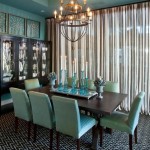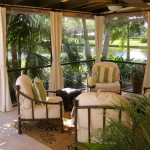```html
Decorating Odd-Shaped Living Rooms: A Guide to Maximizing Space and Style
Odd-shaped living rooms, with their unusual angles, alcoves, and architectural quirks, can present unique decorating challenges. However, these unconventional spaces also offer opportunities to create truly distinctive and visually appealing environments. The key to successfully decorating an irregularly shaped living room lies in understanding the space's limitations and embracing its unique characteristics rather than fighting against them. This article will delve into practical strategies for maximizing both functionality and aesthetic appeal within these unconventional spaces.
Understanding the Room's Architecture
Before selecting furniture or considering paint colors, a thorough assessment of the living room's architecture is essential. Take detailed measurements of the room, noting the dimensions of each wall, doorway, window, and any built-in features like fireplaces or alcoves. Identify any structural irregularities, such as sloped ceilings, angled walls, or protruding columns. Consider the natural light sources and how they impact the space. These observations will inform the design decisions and provide a foundation for creating a harmonious layout. Drawing a basic floor plan, even a rudimentary one, can be incredibly beneficial. This allows visualizing different furniture arrangements and identifying potential problem areas.
Defining Zones and Creating Flow
Odd-shaped rooms often benefit from being divided into distinct zones. Each zone can serve a specific purpose, such as a seating area, a reading nook, a home office, or an entertainment center. To define these zones, consider using furniture strategically. For example, a large sectional sofa can anchor a seating area, while a bookcase or console table can subtly separate the seating area from a designated workspace. Area rugs can also be used to visually delineate different zones, further enhancing the room's organization and flow. Consider the natural traffic patterns throughout the space. Ensure that pathways between zones are clear and unobstructed. Avoid placing large furniture pieces in areas that would impede movement, creating a cramped and uncomfortable environment.
Furniture Selection: Size and Scale Considerations
Furniture choices are crucial when decorating an oddly shaped living room. Avoid overpowering the space with oversized furniture. Instead, opt for pieces that are appropriately sized for the proportions of the room. Consider the height of the furniture in relation to the ceiling and the size of the windows and doors. In smaller or more angular rooms, choose furniture with clean lines and a streamlined silhouette to create a sense of spaciousness. Utilize multi-functional furniture whenever possible. A storage ottoman can provide both seating and storage, while a sofa bed can accommodate overnight guests. Consider the placement of the furniture in relation to the room's focal points, such as a fireplace or a large window with a view. Arrange the furniture to maximize the visual impact and draw attention to these architectural features.
Embracing Angles and Alcoves
Rather than attempting to conceal the room's unique angles and alcoves, incorporate them into the design. Angled walls can be used to create dynamic and visually interesting layouts. A corner sofa can fit perfectly into an angled space, maximizing seating capacity. Alcoves offer opportunities for built-in storage, custom shelving, or cozy reading nooks. Install custom cabinetry or shelving units to fit the specific dimensions of the alcove, enhancing visual appeal and increasing functionality. If an alcove has a window, consider incorporating a window seat with built-in storage. This creates a comfortable spot for relaxing and reading while maximizing space utilization. Utilize mirrors strategically to reflect light and visually expand the space, particularly in smaller or darker areas.
Color Palette and Visual Tricks
The color palette plays a significant role in shaping the perception of space. Light and neutral colors tend to make a room feel larger and airier. Use these colors on the walls to create a sense of spaciousness, especially in rooms with limited natural light. Introduce darker accent colors through furniture, accessories, and artwork to add depth and visual interest. Use a monochromatic color scheme to create a cohesive and streamlined look, particularly in rooms with complex architectural features. Employ vertical stripes or patterns on walls to visually increase ceiling height. Hang curtains high and wide to make windows appear larger and create a sense of grandeur. Use lighting strategically to highlight architectural features and create a warm and inviting atmosphere.
Lighting: Layering and Placement
Lighting is paramount for both functionality and atmosphere. Layer the lighting to create a balanced and inviting environment. Utilize a combination of ambient, task, and accent lighting. Ambient lighting provides overall illumination, while task lighting is used for specific activities, such as reading or working. Accent lighting highlights architectural features, artwork, or decorative objects. Install recessed lighting in areas with low ceilings or angled walls to provide even illumination without taking up valuable space. Use floor lamps and table lamps to add warmth and visual interest. Position lamps strategically to avoid glare and create pools of light in different zones. Dimmer switches allow adjusting the intensity of the lighting to suit various moods and activities.
Accessories and Personal Touches
Once the furniture is in place and the layout is established, focus on adding accessories and personal touches to complete the room's design. Artwork, throw pillows, blankets, and decorative objects can inject personality and style. Choose accessories that complement the color palette and overall aesthetic of the room. Incorporate textures and patterns to add visual interest and create a sense of warmth. Arrange accessories thoughtfully, creating visually pleasing groupings and balancing the elements throughout the space. Avoid cluttering the room with too many unnecessary items. Edit the accessories regularly, removing anything that detracts from the overall aesthetic or functionality of the space. Plants and greenery can bring life and freshness to any living room, also purifying the air.
```
Making An Awkward Shaped Living Room Work

How To Arrange An Odd Shaped Living Room

Interior Design For Awkwardly Shaped Spaces Ellecor

Making An Awkward Shaped Living Room Work

How To Arrange Furniture In An Odd Shaped Room Curio Design Studio

Making An Awkward Shaped Living Room Work

How To Finance A Renovation And Stay Within Budget Home Bunch An Interior Awkward Living Room Layout Furniture Arrangement Livingroom

Awkward Living Room Needs Decorating Help How To Decorate

Making An Awkward Shaped Living Room Work

How To Decorate An Oddly Shaped Room And Love It Home Garden
Related Posts







